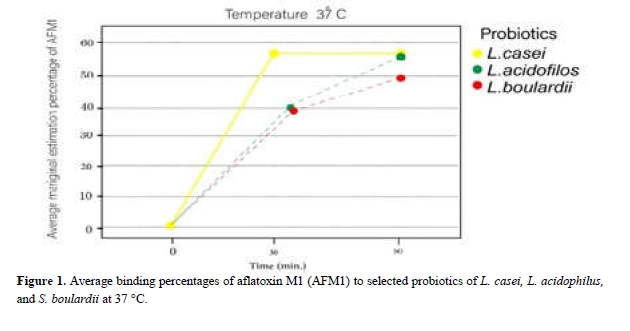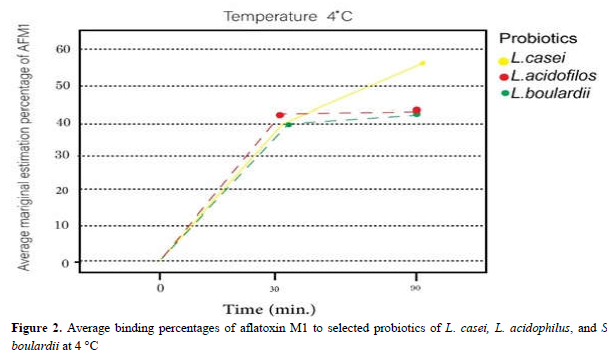Aflatoxin is one of the most important basic fungal toxins produced through toxic fungi such as Aspergillus parasiticus, Aspergillus flavus, and Aspergillus nomius which grows on food, particularly cereals. Livestock feed contaminated with such toxins creates a risk of liver cancer and other hazardous diseases. In livestock, aflatoxin B1 (AFB1) is metabolized in the liver and converted to aflatoxin M1 (AFM1), a compound believed to be less hazardous than AFB1, but which causes perilous diseases such as cancers and liver problems in milk consumers.
This problem is mostly observed in livestock farms located in hot and humid areas. Not only food-storing countries but also food-producing ones suffer from an aflatoxin crisis. Today, aflatoxins have become a global concern for food safety, human health, and their management, and the direct contact of humans (particularly the elderly and children) with AFM1 is one of the challenges and concerns in the fields of health and milk hygiene. Therefore, it is critical to maintain food hygiene and quality, particularly during storage. The International Agency for Research on Cancer (IARC) has recently classified AFM1 in group 1, the most dangerous carcinogenic group Until now, chemical, physical, or biological methods or compounds have been used to assess their ability to remove AF from milk and other dairy products.
The success of probiotic-based detoxification has been confirmed by outcomes from recent studies, which were accomplished for milk and other dairy products as one of the dietary strategies to prevent humans from being contaminated with aflatoxin. Some researchers have recognized the ability and role of lactobacilli and yeasts in binding to aflatoxin in milk and noted that Saccharomycis boulardii might be capable of removing AFM1 from milk mediums.
The binding values of AFM1 to L. casei, L. acidophilus, and S. boulardii in nonfat contaminated milk medium in the face of different selected physicochemical conditions are presented. The highest activity of L. casei in the removal of AFM1 toxin was observed at a concentration of 107 cfu/ml and 37 °C (Figure 1). It was observed after 90 min of exposure without a significant difference from the desired value in 30 min. Regardless of the AFM1 concentration and probiotic density, the highest marginal estimation
percentage of AFM1 removal from the milk medium at 4 °C in initial minutes belonged to L. acidophilus, which gradually became the same for all three probiotics up to 90 minutes (Figure 2).

The lowest recorded dose of L. casei occurred at the same bacterial concentration and temperature with an AFM1 concentration of 0.5 and a minimum exposure time of 30 minutes .
However, this value was not significant compared to those removed by L. acidophilus and S. boulardii.
Unlike L. casei, L. acidophilus showed its highest AFM1 removal potential in milk medium at 4 °C (Fig. 2). Removal of AFM1 was increased by L. acidophilus (109 cfu /ml) from 30 to 90 min with decreases in the concentration and temperature. The lowest binding of AFM1 to this bacterium occurred in the first few minutes, which increased significantly with increases in temperature up to 90 min .
Figure 2 shows that only the average marginal estimation of L. acidophilus increased in the elimination of AFM1 at 4 °C up to 90 minutes; them other two probiotics showed no increases at 4 °C.
- boulardii had no such incremental pattern and followed no specific pattern. It had the greatest ability in AFM1 removal from milk medium .
Over time in the early hours (90 min) with increases in AFM1 concentration (0.75 ng/ml) and a concentration of 109 cfu /ml at 37 °C; however, binding declined with decreases in temperature. The lowest of AFM1 removal from milk medium by S. boulardii occurred at 4 °C with reductions in toxin concentration and yeast density.

Conclusion
- boulardii at a density of 107 cfu/ml at 37 °C could significantly reduce AFM1 in milk medium.
AFM1 detoxification from milk medium was about 97% by S. boulardii after 90 min, while in combination with L. casei and L. acidophilus, it reached 100%. The results revealed the possibility of using some strains of LAB and S. boulardii in the detoxification of AFM1- contaminated milk. The application of this phenomenon in the removal of mycotoxins from contaminated food and feed is urgently needed to improve the safety of food and feed. Additional studies are needed to investigate the mechanisms involved in the removal process of toxins by LAB, aiming for its application in the dairy industry. The future trends are to identify the genetic characteristics that gave the probiotics and LAB strains the ability to remove AF.



